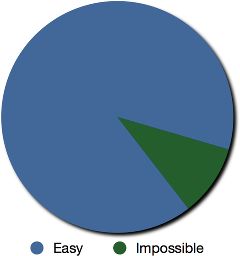Are you sure you want to localize?
It’s a wonderful fact about the world that humans have thousands of living languages. And a wonderful fact about many software development environments that they provide ways to create versions of applications localized into the most common of those languages. But before localization (or should I say world-readiness) sweeps you off your feet, let me tell you about some unexpected difficulties with Kineme’s first localized application.




 From time to time, I get these insatiable urges to read what other Cocoa developers blog about. Sometimes they’re informative, sometimes they’re funny, sometimes they read like college textbooks, and sometimes they’re just downright terrible, but I read them anyway. It comes and goes in waves, every 2 or 3 months. A couple weeks ago, one such binge happened, and I started reading Aaron Hillegass’ critique of
From time to time, I get these insatiable urges to read what other Cocoa developers blog about. Sometimes they’re informative, sometimes they’re funny, sometimes they read like college textbooks, and sometimes they’re just downright terrible, but I read them anyway. It comes and goes in waves, every 2 or 3 months. A couple weeks ago, one such binge happened, and I started reading Aaron Hillegass’ critique of  Apple has been busily working to 64-bit-ify all of the frameworks they plan to continue supporting into the future (Snow Leopard and beyond). However, QuickTime is scheduled for some nice Cocoaification, so it didn’t get much 64-bit love.
Apple has been busily working to 64-bit-ify all of the frameworks they plan to continue supporting into the future (Snow Leopard and beyond). However, QuickTime is scheduled for some nice Cocoaification, so it didn’t get much 64-bit love. 


 For years, iPhoto users have been stuck using a limited number of email clients to send their photos easily. This was mostly remedied by the
For years, iPhoto users have been stuck using a limited number of email clients to send their photos easily. This was mostly remedied by the  The Kineme Quartz Composer patches now have a proper home at
The Kineme Quartz Composer patches now have a proper home at